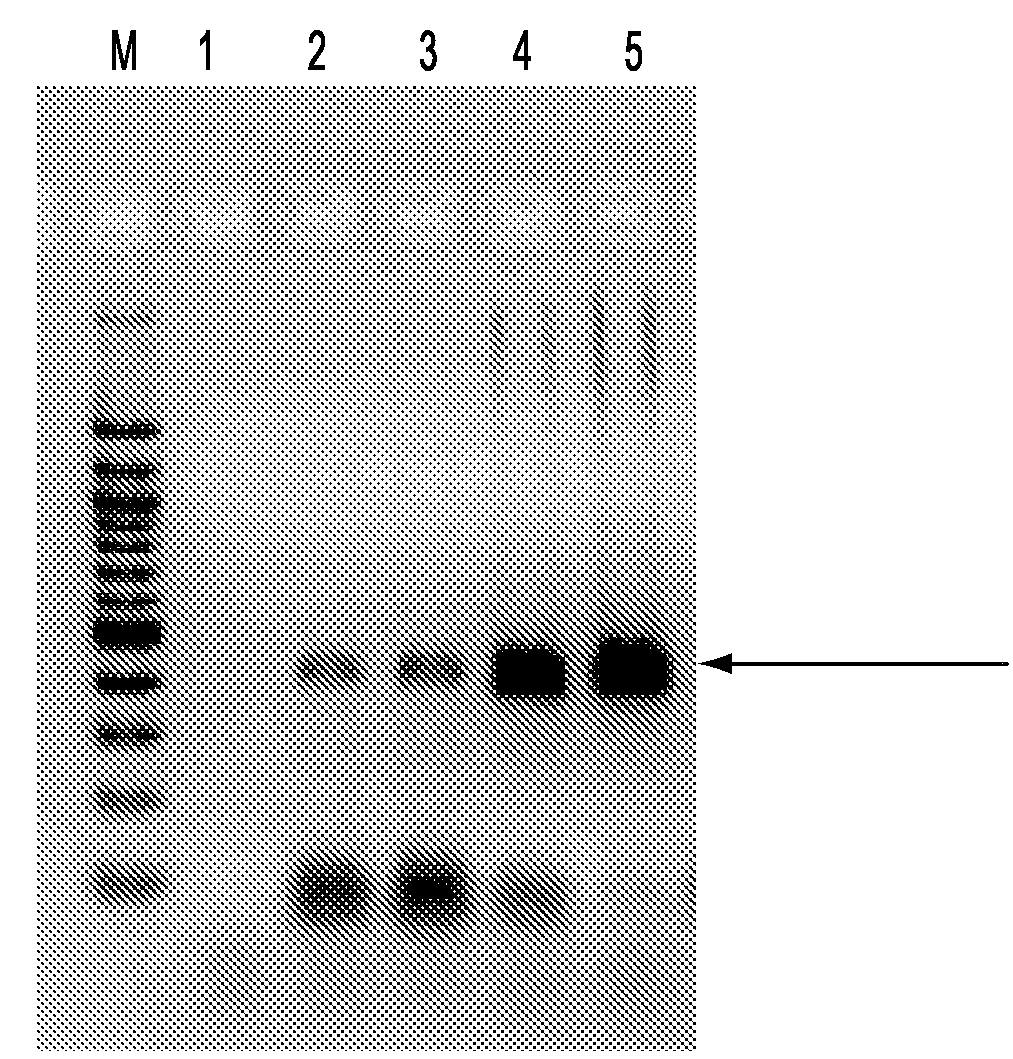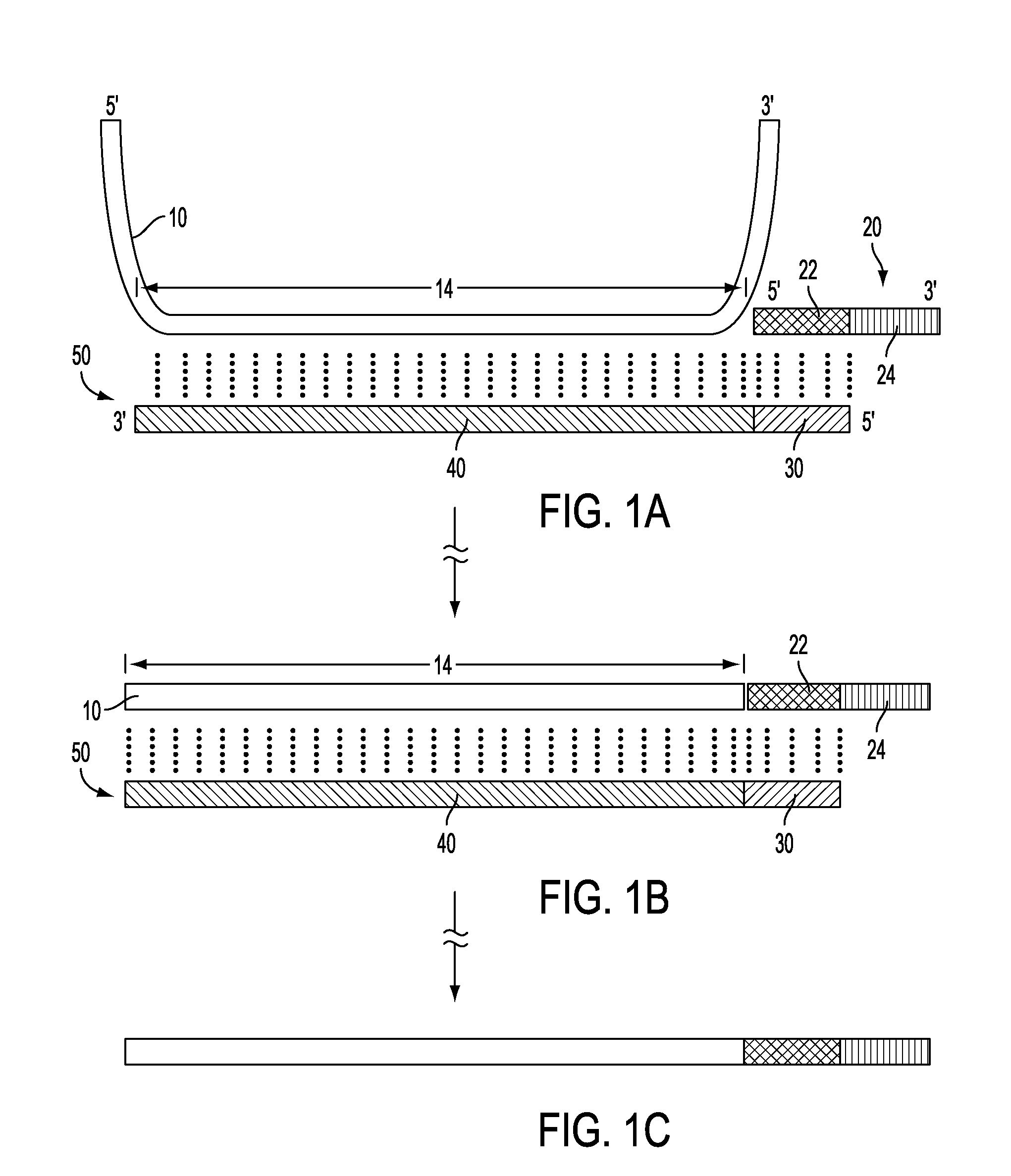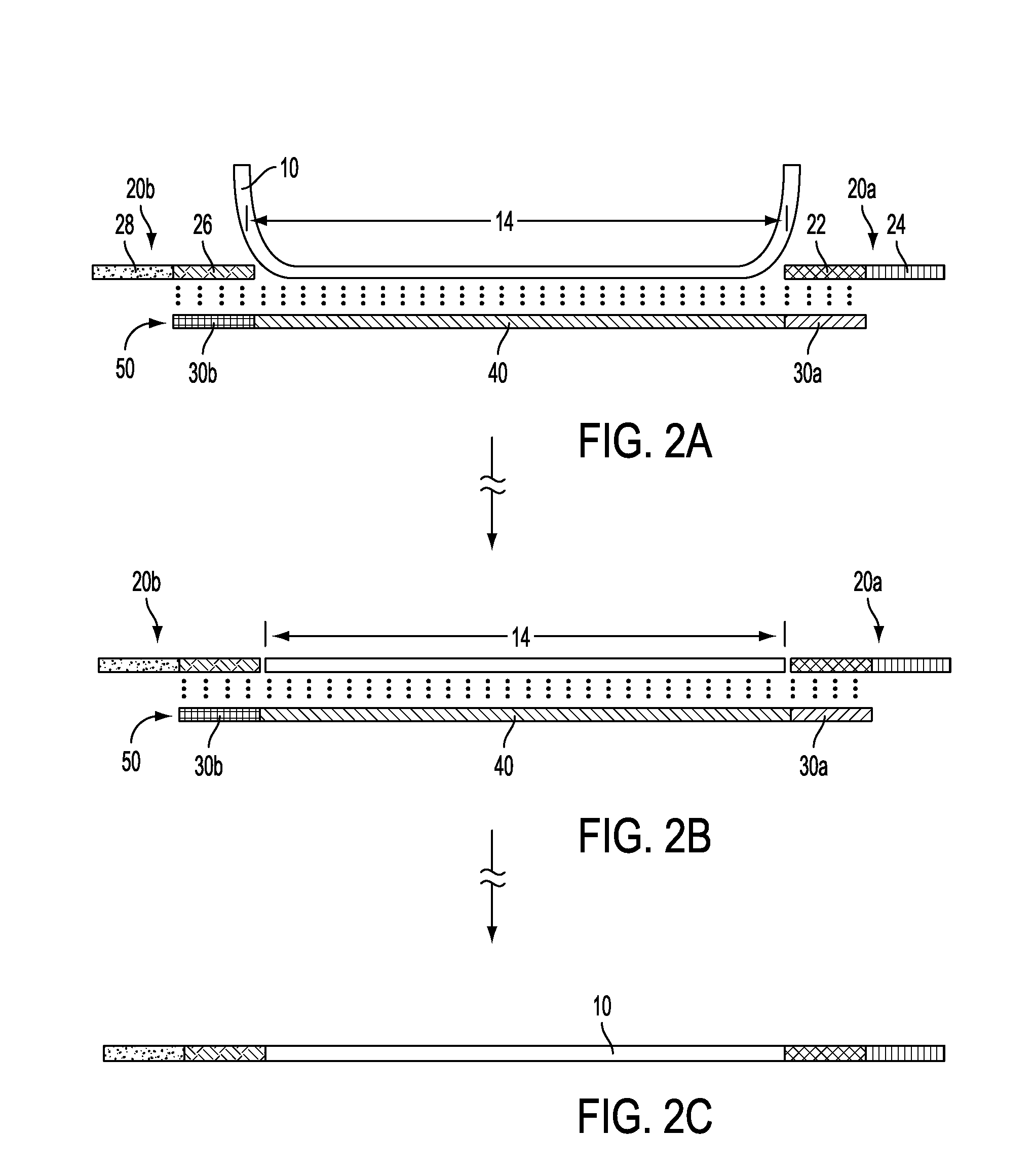Multiplex oligonucleotide addition and target amplification
a technology of multi-oligonucleotide and target amplification, applied in the field of multi-oligonucleotide addition and target amplification, can solve the problems of poor sensitivity and specificity, unfavorable amplification of some templates, and poor sensitivity or failure of some templates, and achieve the effect of wide variety and high specificity
- Summary
- Abstract
- Description
- Claims
- Application Information
AI Technical Summary
Benefits of technology
Problems solved by technology
Method used
Image
Examples
example 1
Oligonucleotide Attachment to Free Template Ends
[0180]A single probe is generated by amplifying DNA from a clone containing exon 14 of the cadherin gene, using dUTP instead of dTTP in the PCR reaction and primers complementary to vector sequences flanking the clone. PCR product consisting of exon 14 of the cadherin gene is used as template. Oligonucleotides are chemically synthesized.
[0181]In parallel reactions using serial dilutions of template ranging from 30 zmole to 30 fmole, template and a sufficient quantity of two different oligonucleotide species are concurrently hybridized to probe. Ligation is then performed using Taq ligase to append the common oligonucleotides to the annealed template.
[0182]UDG treatment is used to eliminate the probe, and a PCR reaction using common primers—one being the same as the oligonucleotide used in the preceding hybridization and ligation, the other being complementary to the oligo used in the hybridization and ligation—is performed.
[0183]FIG. 6...
example 2
Amplifying and Detecting a Plurality of Templates
[0187]Ten (10) probes are generated from 10 different clones.
[0188]Nine (9) templates are generated by PCR in an art-standard multiplex reaction using nine separate pairs of primers. Six of the templates perfectly match six (6) of the probes; two (2) probes have no matching template; one template has no matching probe; and two 0. (2) templates match probes but the templates are a few nucleotides longer than the respective probe, precluding probe-directed positioning of oligonucleotides and ligation of oligonucleotides to the template.
[0189]Therefore, only 6 fragments are expected after “capture” (i.e., probe-directed attachment of oligonucleotides to template) and amplification, as illustrated in FIG. 7A: fragments (ii), (iv), (v), (vi), (x) and (xi) are in both the template mixture and the probes; fragments (i) and (iii) are also present in both in the template mixture and the probes, but the templates include extra bases; fragment (...
example 3
Normalization of Template Dynamic Range
[0192]In these experiments, we expect that the various templates are present in widely different amounts, an artifact of the art-standard multiplex PCR reaction used to generate the templates. By utilizing a limiting amount of probe, however, we demonstrate here a decrease in the dynamic range of the ultimate product amplified by the common primers.
[0193]The 10 probes used in the preceding example (schematized in FIG. 7A) are used in this experiment at a concentration of 15 amole each. Ten (10) templates are used. The templates include the 9 templates shown in FIG. 7A as well as probe (viii) in FIG. 7A. Similar results are obtained whether the template is at 1.5 amole or 150 amole, with all products amplifying well, as demonstrated in FIG. 8.
[0194]FIG. 8 shows the results of the PCR reaction with common primers following probe-directed oligonucleotide ligation to each of the templates.
[0195]In lane 1, all the templates are at 150 amole for the ...
PUM
| Property | Measurement | Unit |
|---|---|---|
| volume | aaaaa | aaaaa |
| volume | aaaaa | aaaaa |
| volume | aaaaa | aaaaa |
Abstract
Description
Claims
Application Information
 Login to View More
Login to View More - R&D
- Intellectual Property
- Life Sciences
- Materials
- Tech Scout
- Unparalleled Data Quality
- Higher Quality Content
- 60% Fewer Hallucinations
Browse by: Latest US Patents, China's latest patents, Technical Efficacy Thesaurus, Application Domain, Technology Topic, Popular Technical Reports.
© 2025 PatSnap. All rights reserved.Legal|Privacy policy|Modern Slavery Act Transparency Statement|Sitemap|About US| Contact US: help@patsnap.com



